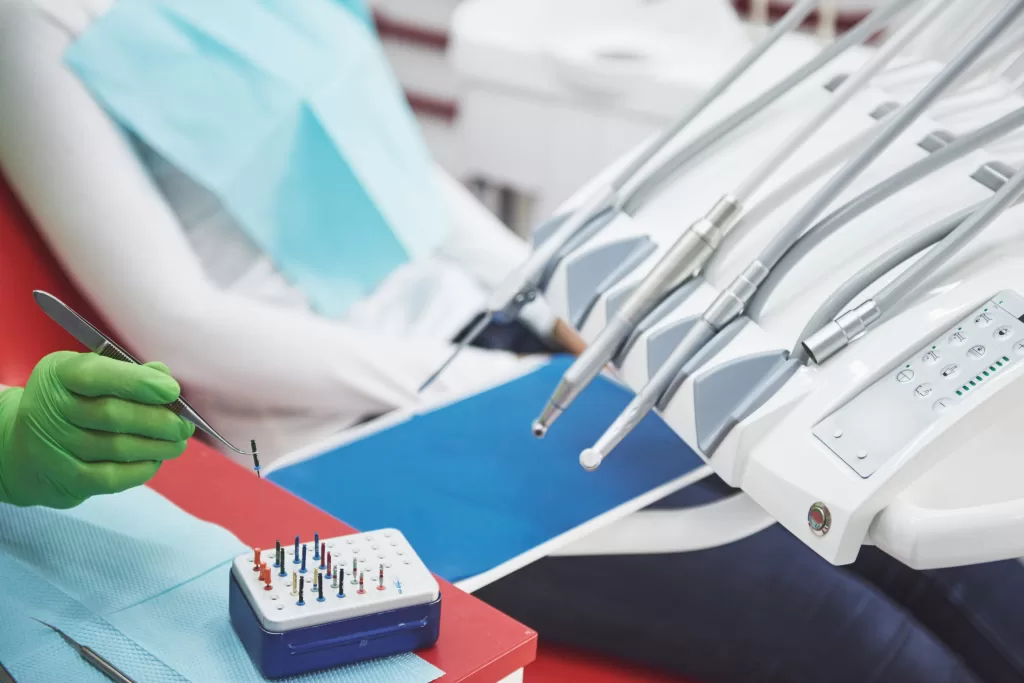Dental professionals perform tooth extractions to treat patients with severe decay, infections, or when teeth become overcrowded. Tooth extractions appear simple on the surface but surgeons need to dedicate specific planning and specialist tools for procedures to ensure patients stay safe during the extraction process.
An oral surgeon uses these tools to perform efficient extractions with minimum discomfort while speeding up patient healing. The key instruments used by oral surgeons working on tooth extractions serve critical purposes which I will explain together with detailed explanations.
The Role of Specialized Tools in Tooth Extractions
Precision and Efficiency
Tooth extraction success depends heavily on achieving precise outcomes. Toxicological removal requires surgeons to perform successful teeth extraction and non-aggressive treatment of surrounding soft tissues. Specialized tools help oral surgeons reach the precision they need to work effectively on one tooth while maintaining safety for nearby teeth and sensitive dental areas.
The appropriate surgical instruments enable oral surgeons to execute extractions more rapidly thus minimizing patients’ chair time. Patients experience better comfort and treatment success becomes higher because short surgical duration decreases the chance of medical complications.
Ensuring Comfort and Safety
Surgical devices in modern practice combine accuracy with patient comfort design features through dedicated instrument development. Modern dental forceps together with elevators underwent purposeful design work which maximizes extraction ease while minimizing damage to surrounding tissues during surgery. These unique surgical tools reduce patient discomfort throughout their treatment and throughout recovery time.
Advanced surgical tools help surgeons extract teeth more safely because they prevent structural damage from occurring during the procedure. Advanced tools enable safe tooth extraction particularly when the tooth extends deeply into the jaw or becomes trapped. Nicely designed tools from Villers enable shorter periods of discomfort as well as quicker recovery times.
Key Tools Used in Tooth Extractions
Diagnostic Tools

A comprehensive assessment needs to occur before starting any extraction process. There is a combination of X-rays and various imaging devices surgeons use for inspecting both the state and location of a tooth in the jaw. These diagnostic tools produce precise pictures of tooth roots and associated bone tissue allowing surgeons to determine the most effective surgical method.
Wisdom teeth extractions require precise diagnostic techniques because teeth positioned poorly within the jaw make the removal more intricate. Clear diagnostic images enable surgeons to anticipate upcoming procedure challenges so they can establish better extraction plans which lead to enhanced procedural flow.
Elevators
Elevators are among the first tools used in tooth extraction. Their job is to gently loosen the tooth from the surrounding ligaments, reducing the amount of force needed for removal. By doing this, elevators help prevent damage to the tooth socket and adjacent teeth.
There are different types of elevators, each designed for specific purposes:
- Straight Elevators: Used to apply upward pressure and lift the tooth from the socket.
- Triangular Elevators: Provide rotational leverage to assist in extracting stubborn teeth.
- Periosteal Elevators: These are often used to lift the gums and expose the tooth, giving the surgeon better access to the root.
Using elevators properly helps to minimize trauma to the surrounding tissues, making the extraction more efficient and less painful for the patient.
Forceps
Following the elevator loosens the tooth surgeons use forceps to remove the tooth through its socket. The tools perform to ensure a strong hold of the tooth which enables the surgeon to extract this tooth safely while protecting nearby bone structures.
Numerous designs exist for forceps which are intended for extracting specific teeth types. For example:
- Universal Forceps: Exclusive to universal forceps is their ability to facilitate teeth extractions and their flexibility extends to common procedures.
- Specialized Forceps: These specialized tools function to minimize extraction control during procedures that target particular teeth including molar or incisor teeth.
The proper use of forceps helps dental surgeons extract teeth cleanly by preventing damage to adjacent structures and tooth breakage.
Surgical Handpieces and Burs
When teeth are impacted or hard to extract surgical tools including handpieces along with burs assist in sectioning and minimization of teeth pieces. The surgeon achieves easier tooth removal through the use of these instruments despite needing less force in the procedure.
The breakdown process of sectioning reduces the potential damage to adjacent bone tissue while protecting the remaining tooth structure from breakage. Burs specifically function for tooth sectioning by generating precise cuts to simplify tooth removal while maintaining a minimally invasive procedure.
Hemostats and Suturing Tools
After taking out the tooth, the next thing to do is to stop any bleeding and close up the wound. The procedures of suturing serve three essential purposes: stopping bleeding and defending the extraction area from infection. Patients experience rapid healing with fewer complications after the wound achieves the correct placement in its closure.
Advanced Technology in Tooth Extractions
Laser-Assisted Extractions
Laser technology has brought significant improvements to dental surgeries, including extractions. Laser-assisted tools are now used to perform precise cuts, reduce bleeding, and promote faster healing. For patients, this means a gentler extraction with less swelling and discomfort.
Lasers are particularly useful for patients with more complicated cases, as they can help reduce trauma to surrounding tissues, leading to a quicker and more comfortable recovery.
3D Imaging and Guided Surgery

Using 3D imaging methods brings significant advancements to surgeons’ ability for detailed dental surgery planning and procedural execution. A detailed model of the patient’s teeth and jaw allows surgeons to design their procedures with exactness while predicting difficulties before they happen.
This technology delivers careful movements for each extraction step which lowers complications risks and delivers better patient results.
How These Tools Benefit Patients
Reducing Anxiety with Clear Information
A tooth extraction creates anxiety in numerous patients seeking dental care. By clarifying surgical instruments and treatment approaches surgeons help patients feel less anxious about their procedures. Learning about both the procedure timeline and the function of extraction tools enables the patient to calm down and feel more assured.
Ensuring the Best Possible Outcomes
In combination with cutting-edge tools surgeons perform extractions that result in minimal potential complications. The combination of advanced tools and techniques results in decreased recovery duration and minimizes pain alongside decreased infection probabilities. Through fast recoveries and limited post-treatment worries, patients can resume their regular routines more quickly.
Why Our Clinic Stands Out
At our clinic, we take pride in using state-of-the-art technology and tools to ensure that every tooth extraction is handled with care and precision. Whether you require a routine extraction or a more complex procedure, our team is here to provide expert care and support throughout the process.
Schedule your consultation with Ridge Oral Surgery today and experience a smooth and professional tooth extraction.
Conclusion
The ultimate safety and effectiveness of tooth extractions depend on specialized instruments as well as patient comfort strategies which combine to produce exceptional results. The tools work in concert to create a straightforward extraction experience through diagnostic stages and post-extraction suturing. Patients receive rapid recovery and great treatment outcomes when expert care joins these specialized tools.
